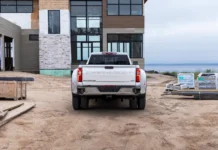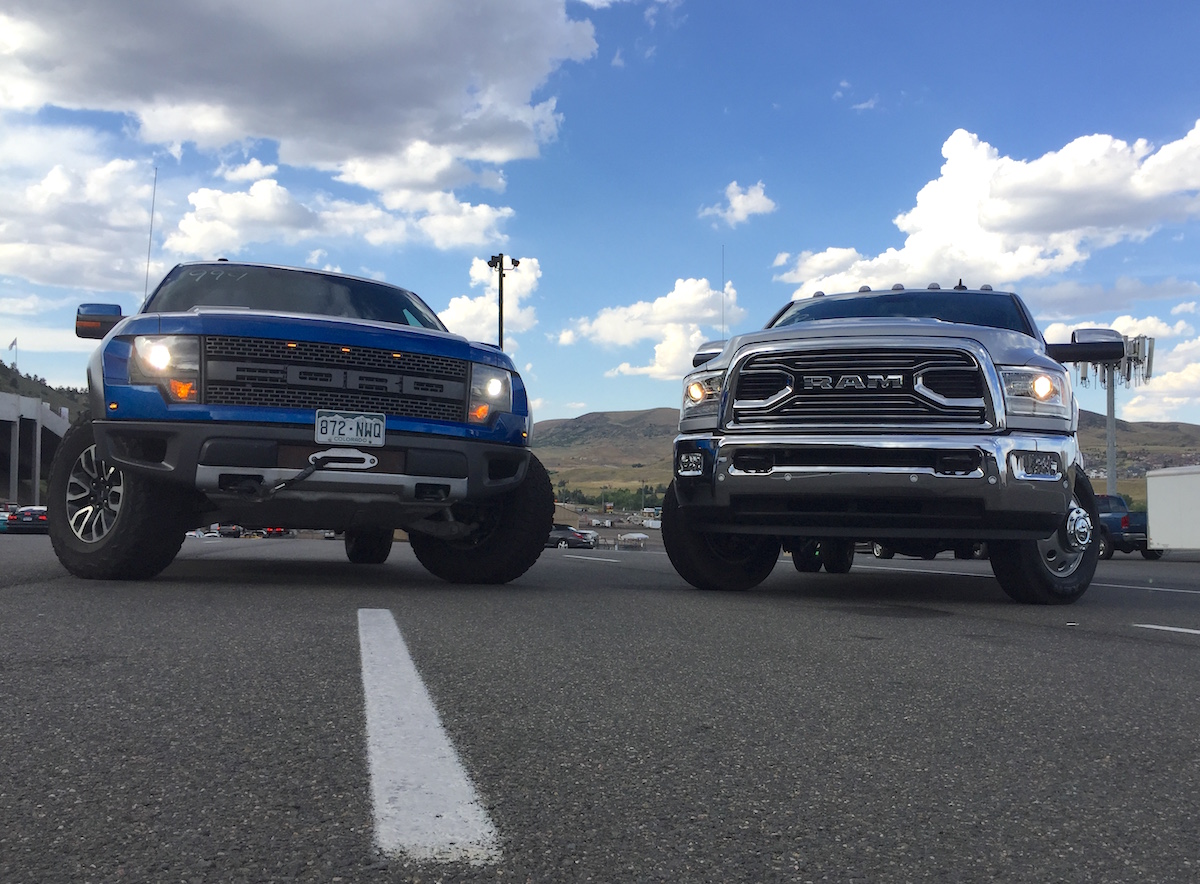
You continue to comment that pickup truck prices are high and keep getting higher. We did some research and found these Top 10 reasons why truck prices went through the roof.
Here are a couple of facts about current truck prices as of July 2023.
- The average new Ford F-Series price is $66,000 according to CarEdge.com (this includes the Super Duty).
- You can configure a Ram HD 3500, Ford F-350, or a GMC Sierra HD 3500 for up to $100,000+ each.
Here are the Top 10 reasons the prices are getting this high.
10. Government Regulations
The government is primarily focused on regulating all vehicle safety and vehicle emissions.
We continue to see higher speeds on our highways. The number of vehicles on our roads continues to increase. The government and automotive insurance companies are interested in more robust safety in our vehicles. Consumers are also interested in this. As such, our pickup trucks must keep pace and protect us and our passengers better. Some of these mandated features include cameras, traction/stability control systems, and automated emergency braking. This adds cost to the development and construction of our pickups.
Emissions are the second piece of this puzzle. The efficiency and emissions output requirements continue to get more strict. A significant tightening of these regulations was initially driven by then California Governor, Arnold Schwarzenegger. This is adding cost to the emission controls system on our truck, such as diesel particulate filters and DEF treatment systems.
9. Software Also Costs Money
Software is becoming more central in the design and everyday operation of new vehicles. A software glitch or problem can cripple a new pickup truck. This has to do with vehicle management systems as well as entertainment systems. As software takes a more central role, the cost of this software will continue to rise.
There can also be after-sale add-on software features that provide significant value and cost a lot of money. As an example, the Tesla Full Self-Driving (FSD) software package is currently priced at $15,000. This price may increase in the future as the FSD system become more reliable and capable.
8. Profit Focused Manufacturers
As new automotive manufacturers continue to join the market, there is increased pressure on them and existing “legacy” manufacturers to generate revenue and profit for their shareholders. Most of these companies are publicly traded.
Also, many manufacturers are making huge investments for the future that must be funded. For example, Ford is investing several $Billion dollars into the “Ford BlueOval City” in Tennessee. GM and others are making similar investments into new factories and upgrading current facilities.
7. New Technologies and Components
New pickup trucks are getting very fancy. For example, a new 2023 Ford F-150 or 2023 Super Duty can be equipped with a trailer hitch assist function. The truck will back up its hitch receiver to the trailer’s tongue in an automated fashion. Truck headlights are getting more fancy and more expensive. Many upper trims offer LED-based headlamps with self-leveling and cornering capabilities. It means that some of them cost over $1,800 for a pair.
All the sensors and cameras (that are looking forward) are positioned behind our new windshields. This increased the cost of windshields and windshield replacement. For example, a Ford F-150 Lightning windshield cost us over $1,500 to replace. A windshield for a 1997 Ford F-250 costs around $400 to replace.
6. New Internal Combustion Powertrains
We all love power. Ram TRX and Ford F-150 Raptor answer with supercharged V8 engines that are very expensive. Most other versions of the pickup truck are in the process of switching from large V8 engines to smaller displacement turbocharged engines. These latest turbocharged gasoline and diesel engines are highly advanced and use the latest metal alloys. This does not make our pickup trucks any less expensive.
5. Electrification (Battery Electric, Hybrids, and More…)
The raw materials needed to produce batteries and electric motors continue to fluctuate in price. However, this is just part of the story. While converting our 1965 Ford F-100 pickup truck to a battery-electric powertrain, we learned that it’s the small components that drive up the price as well. The battery is a large part of the cost equation, but inverters, controllers, and onboard chargers can be very pricey. The price of these components increases exponentially if you are looking to add fast-charging capability to your vehicle.
4. Inflation / Interest Rates
The U.S. dollar inflation is starting to calm down, it’s still near 3%. This is outpacing income growth and makes everything we buy more expensive. The higher interest rates are making this situation worse.
3. Packages & Option Groupings
Most manufacturers come up with clever ways of grouping certain features into larger more expensive packages. For example, a 400 Watt power outlet in a Ram 1500 pickup truck may be part of a larger optional package that costs $2,800 or more. What if you just want a 400 Watt inverter and not all the other items on the list?
Chevrolet packages cruise control and a rear sliding window into a single package. What if you just want cruise control by itself?
2. Truck Is the Do-It-All & Do-It-Yourself Family Vehicle
Our pickup trucks have become our family trucksters and daily drivers. Many consumers demand all of the luxuries and comforts of a traditional sedan or SUV in a pickup truck. This includes power steps, panoramic sunroofs, massaging seats, powered tailgates, high output inverter system to power a home or a job site, and more… The list goes on and on.
1. Lower Number of Cheap Base Trucks
According to recent data from CarEdge.com, just 6.4% of all new Ram 1500 trucks are Tradesman base pickups. Also, just 6% of new Chevy Silverado 1500 trucks are base WT work trucks. What is driving this? Is it the private consumers and fleet buyers? Is it due to the manufacturers who are still dealing with component shortages? We do not know for sure. However, the number of more affordable base trucks is currently low. This number needs to increase, so we have more affordable trucks to purchase.
Roman and I discuss these topics in the video below.
















![Which is More Reliable: 3.5L EcoBoost or 5.0L V8? [Reader Question] Second-generation 3.5-liter EcoBoost engine](https://tfltruck.com/wp-content/uploads/2016/05/Second-generation-35-liter-EcoBoost-engine.jpg)
![Which Silverado Engine to Get: 5.3L or 6.2L V8? [Ask TFLTruck] 2016 chevy silverado](https://tfltruck.com/wp-content/uploads/2015/10/2016-chevy-silverado-grille.jpg)
